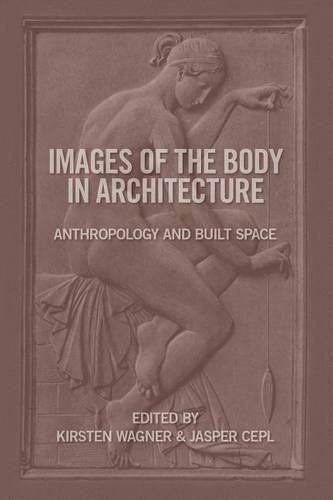Readings Newsletter
Become a Readings Member to make your shopping experience even easier.
Sign in or sign up for free!
You’re not far away from qualifying for FREE standard shipping within Australia
You’ve qualified for FREE standard shipping within Australia
The cart is loading…






The essays collected in this volume are intended to stimulate research in the anthropology of architecture on the basis of a critical history of the body and its cultural constructions.
The analogy between architecture and the human body is rooted in the fundamental impact the latter has on ordering, symbolising, and interpreting the world. Correspondingly, the metaphorical conceptualisation of the built environment in terms of the human body was already practiced in early cultures and has determined architectural theory since antiquity. While the architectural treatises of early modern times vividly imagine anthropomorphic and anthropometric figures, they seem to be overcome by an architectural theory that is based on purely rational as well as mechanical laws. However, these figures were never totally abandoned, and Le Corbusier’s Modulor is only one, if not the most prominent example, for their ongoing reception and transformation in modern times.
The human sciences of the 19th century played a significant role in this process. Physiology and psychology brought about not only new experimental devices for analysing the human body and its physiological functions, but also new images of the body that directly went into aesthetics, art history, and architectural theory. This new understanding of the body had a large impact on the production and reception of modern architecture. Due to this background the arts eventually became anthropologically grounded.
The book includes contributions from: Tobias Cheung, Scott Drake, Gunter Feuerstein, Tanja Jankowiak, Eckhard Leuschner, Harry Francis Mallgrave, Indra Kagis McEwen, Irene Nierhaus, Philipp Osten, Heleni Porfyriou, Paolo Sanvito, Christoph Schnoor, Sven-Olov Wallenstein, Frank Zoellner, Beatrix Zug-Rosenblatt, and others.
$9.00 standard shipping within Australia
FREE standard shipping within Australia for orders over $100.00
Express & International shipping calculated at checkout
The essays collected in this volume are intended to stimulate research in the anthropology of architecture on the basis of a critical history of the body and its cultural constructions.
The analogy between architecture and the human body is rooted in the fundamental impact the latter has on ordering, symbolising, and interpreting the world. Correspondingly, the metaphorical conceptualisation of the built environment in terms of the human body was already practiced in early cultures and has determined architectural theory since antiquity. While the architectural treatises of early modern times vividly imagine anthropomorphic and anthropometric figures, they seem to be overcome by an architectural theory that is based on purely rational as well as mechanical laws. However, these figures were never totally abandoned, and Le Corbusier’s Modulor is only one, if not the most prominent example, for their ongoing reception and transformation in modern times.
The human sciences of the 19th century played a significant role in this process. Physiology and psychology brought about not only new experimental devices for analysing the human body and its physiological functions, but also new images of the body that directly went into aesthetics, art history, and architectural theory. This new understanding of the body had a large impact on the production and reception of modern architecture. Due to this background the arts eventually became anthropologically grounded.
The book includes contributions from: Tobias Cheung, Scott Drake, Gunter Feuerstein, Tanja Jankowiak, Eckhard Leuschner, Harry Francis Mallgrave, Indra Kagis McEwen, Irene Nierhaus, Philipp Osten, Heleni Porfyriou, Paolo Sanvito, Christoph Schnoor, Sven-Olov Wallenstein, Frank Zoellner, Beatrix Zug-Rosenblatt, and others.